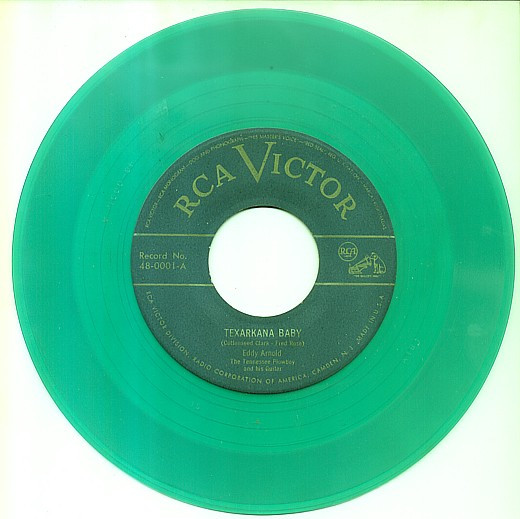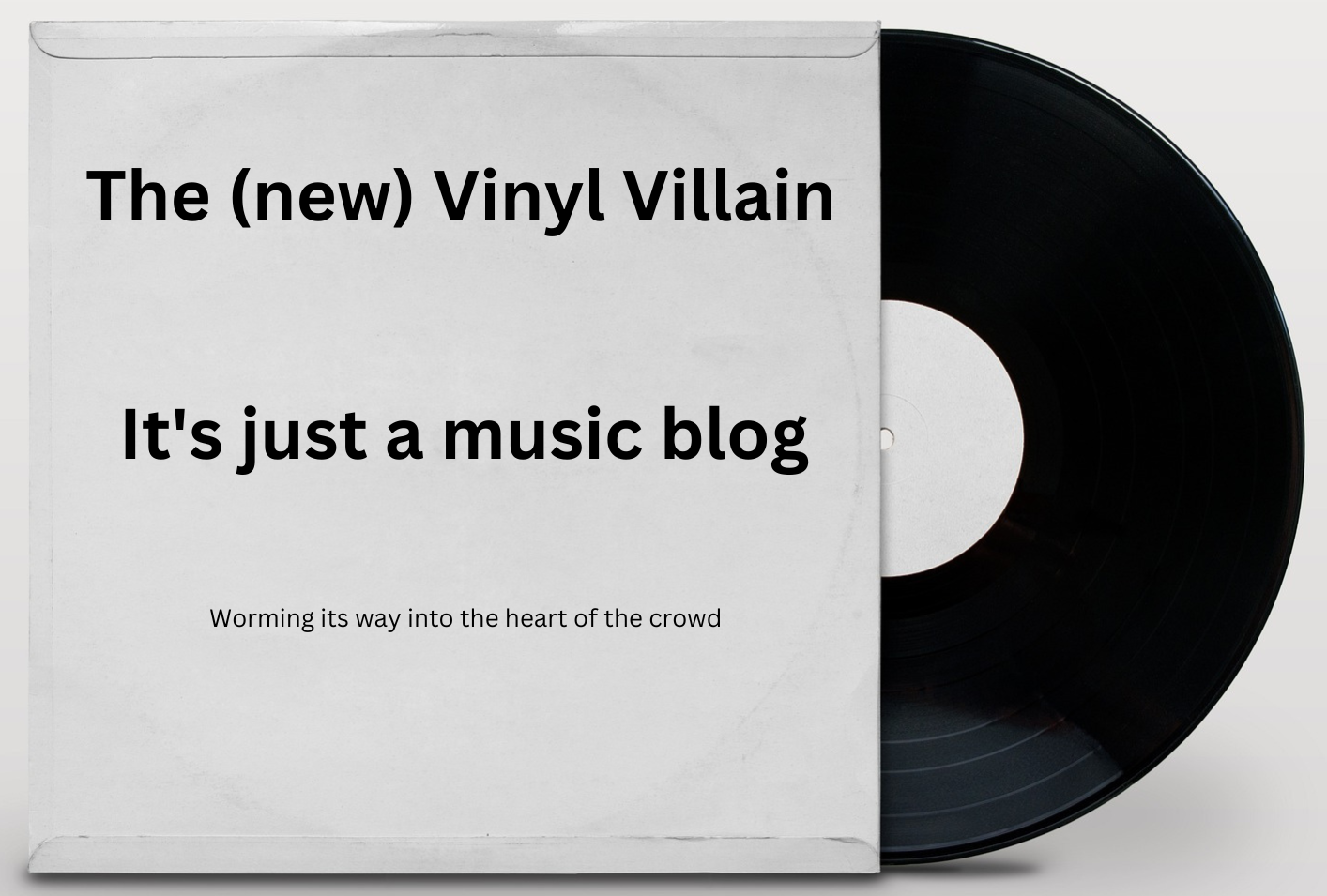A guest posting by Fraser Pettigrew

For me, one of the most wonderful things about vinyl records is that they constitute a current technology that in essence hasn’t changed in nearly 150 years. Apart from the migration from a wax cylinder onto a flat disc and advances in electronic amplification, the reproduction of sound by means of a needle transmitting vibrations from the physical rotation of an etched groove is the same technology that Thomas Edison patented in 1877. That’s pretty remarkable when you consider how radical our technological evolution has been in most other respects over the same period.
I had never really thought much about the development of different record formats until relatively recently when I spent a year and a half working at New Zealand’s film, TV and radio archive. Ngā Taonga Sound & Vision doesn’t really cover music records in its collection, but I was interested to discover that the origins of the 33 1/3 rpm vinyl LP – as distinct from the 78 rpm disc – actually lie in the development of sound in the movies, and in radio, not in the music industry.
But first, some early history.
It was about ten years after Edison’s patent that the lateral disc first emerged, and a few more years until the end of the century before it evolved as a viable commercial sound format. The 78 rpm disc did not become standard until around the start of WW1 – early discs varied in diameter and rotation speed, from 7 to 12 ½ inches and from 60 to 130 rpm. The Gramophone Company settled on 78 rpm in 1912 simply because it was the average speed of most of the records it had been releasing up to then. It wasn’t until the mid-1920s that 78 rpm became the industry standard.
Even then, electrically powered gramophone players would vary according to the rating of the local power supply. So, in a city with a 50hz AC supply your 78rpm disc would play slower than in a city with a 60hz supply. If you were still using a hand-cranked spring driven gramophone you were at the mercy of all sorts of mechanical malfunction.
Electricity didn’t play a part in the recording process until the mid-1920s. Louis Armstrong’s second wife famously recalled a recording session in 1923 where the young Armstrong and band leader King Oliver played side by side into the large horn that acoustically channelled the sound to the lathe cutting the master disc. King Oliver couldn’t be heard at all in the resultant recording, so Satchmo was made to stand about fifteen feet away for the next take.
mp3: King Oliver’s Creole Jazz Band – Dippermouth Blues (1923)
When electricity began to play a part in both recording and amplifying the contents of discs, it was the film industry that took the technology and initiated a development that was the first step towards the vinyl LP that we know and love.
Films had long been accompanied by live musicians, sometimes a single pianist or organist, but also whole ensembles. Filmmakers began commissioning arrangers and composers to create suites of music, scored to complement the action on screen, including sound effects. Clever-clogs Charlie Chaplin composed his own musical accompaniments. Where musicians were too difficult or costly to provide at screenings, the obvious alternative was recorded discs, but the 78rpm disc has one significant drawback here – each 10-inch side can hold barely three minutes of music. The sound man would need to do more flipping than a McDonald’s burger chef.
mp3: Charlie Chaplin (composer) – Afternoon (from ‘City Lights, 1931)
Some short films had used synchronised 78rpm discs to provide sound as early as 1902, but it wasn’t until the development of the Vitaphone system in 1926 that the technique matured to provide sound for full-length features. Vitaphone used 16-inch discs that ran at the slower speed of 331/3 rpm, enabling the sound man to relax and enjoy a fag or two between side changes. Vitaphone was used for numerous films up until 1931, by which time the use of optical soundtrack technology had been perfected.
This proto-talkie history helps to explain how the art of sound mixing and soundtrack direction seemed to emerge almost fully-formed in the earliest years of sound cinema. The way, for example, that Hitchcock was able to use sound in ‘Blackmail’, a film that began production as a silent feature, seems miraculously advanced, but then you can see how filmmakers had been thinking about, if not actually using sound for several years already.
Despite its obvious advantages, it’s strange that the 33 1/3 rpm disc did not immediately find favour in the music industry even as it fell out of favour in the cinema. It continued in use for radio transcription, still often using 16-inch discs, right through until after WW2 when magnetic tape began to displace the large and fragile lacquer discs. Meanwhile the 78 still reigned in the world of music, and was still in use at the beginning of the rock’n’roll era. Early Elvis Presley and Bill Haley 78s will fetch a pretty sum these days.

mp3: Elvis Presley – Heartbreak Hotel (78rpm)
In part, the slow advent of the vinyl 33 can be attributed to the simple barrier of having to replace one universal standard format with another. The 78 rpm gramophone players to be found in consumers’ homes couldn’t play any other sort of record. It’s akin to the change from vinyl to CD that occurred in the late 1980s and 1990s. To play the new format disc you needed to buy an entirely new hi-fi component.
This explains why most of the first CD releases were classical rather than pop. Classical enthusiasts tended to belong to a wealthier stratum of society who were in a position to invest in the new technology. A large chunk of my own classical vinyl collection was picked up for buttons in the late 1980s at Edinburgh’s Record Shak boutique on Clerk Street, where some well-heeled collector had deposited all his unwanted records after replacing the whole lot at a stroke with new CDs!
Throughout the 1930s and 40s the development of the 33 crept forwards in relative obscurity. As mentioned, radio continued to make recordings for broadcast (or from broadcasts) onto the long-playing format, on 10, 12, 14 or 16-inch discs. These were mostly on incredibly fragile ‘acetate’ discs – aluminium platters covered in a lacquer onto which the sound lathe could cut directly, prone to cracking with age or if temperature changes caused the metal base to expand and contract.
Typically these discs were one-off recordings and did not need to be reproduced, but increasingly they would be pressed in multiple copies so that they could be sent to numerous radio stations simultaneously. Advertisers for radio exploited this possibility too. Polyvinyl chloride (‘vinyl’) as a medium for reproducing these discs was developed and proliferated during the late 1930s and 40s owing to its ability to be transported and even posted without risking breakage like acetates or heavy, brittle shellac.
RCA Victor had attempted to launch vinyl 33s as early as 1931. Their timing was off, however. The Great Depression ensured that there were not enough buyers prepared to invest in new equipment for many years. It wasn’t until after the war that the record companies came back to the idea for another try. This time the conditions were right as the legacy of the New Deal and post-war recovery put money in ordinary people’s pockets.
Interestingly, Columbia’s first 12-inch 33 1/3 RPM ‘long-players’ released in 1948 were classical, perhaps prefiguring the same economic dynamic of the CD era. The following year, RCA Victor re-entered the vinyl market with the first 45 RPM 7-inch discs, in seven different colours of vinyl according to music genre! Green (country), yellow (children’s), red (classical), orange (R&B and gospel), blue vinyl/blue label (semi-classical instrumental) and blue vinyl/black label (international).

mp3: Eddy Arnold – Texakarna Baby (RCA Victor Green Vinyl & Label, 1949)
At first the 33 and the 45 were seen by the two companies as competing formats, but within two years each had also adopted the other’s innovation, and the familiar ‘single’ and ‘LP’ distinction quickly formed across the whole industry.
That then, in a very large nutshell, is the story of the vinyl record. Before I finish, here’s a couple of further random bits of record info:
It might be thought that the music album is a commodity born from the emergence of the 33 1/3 long-player in the 1950s. However, the first so-called ‘albums’ of music date back to the first decade of the 20th century. While a single 78 only held three or four minutes of sound per side, longer pieces of music (such as classical compositions) were recorded onto several discs and then packaged together into a book-like format, where the pages were the individual record sleeves. Because of their resemblance to large format photographic albums, already common to many families, the name was borrowed for the collection of discs. The first such music albums were classical collections (funnily enough) produced in 1908 and 1909. You could soon buy empty albums in which to store your own collection of 78s, rather like those portable CD cases you can possibly still get. When the 33 1/3 LP format became established with the ability to hold a dozen or more songs on one disc it became the natural inheritor of the ‘album’ label.
Finally, there is another iconic technology invented at almost the same time as Edison’s phonograph that has similarly survived almost unchanged into the current era – the bicycle. Aside from the advancement in materials and adaptations for different terrain, the bike that Bradley Wiggins toured France on or Danny MacAskill rides down mountains is in its fundamentals identical to the ‘safety bicycle’ of the late 1870s that quickly consigned the penny farthing to history.
All of which must make my vinyl copy of Kraftwerk’s Tour de France Soundtracks the ultimate retro-modernist artefact, most especially when it’s played on this: https://peewee.com/2015/10/16/tgif-a-bicycle-that-plays-vinyl-records-on-its-wheels/
mp3: Kraftwerk – Tour de France

The New Vinyl Villian – a history. I enjoyed that. I particularly liked the bringing together of the bicycle at the end – it made me smile. No idea why.
I also recall a friend’s dad – a classical enthusiast – paying what seemed like silly money for CDs. I thought it’d never catch on.
Flimflamfan
I love my vinyl records, and I love my bicycles, but I don’t think they should go together. I mean, it’s clever to engineer a record player to work vertically, but a quick calculation suggests a typical rotational speed for my wheels (the actual wheels as opposed to the pedal cadence) of 150-200 rpm, and faster on good road. So I don’t think that thing is quite the music-on-the-move solution it purports to be…
Léon Macduff
Really enjoyed this superbly written piece, and learned a lot from it. My word, imagine a 16″ vinyl record.
Strangeways
Love this. there’s old school, there’s old school and there’s today’s post. Love the cycling tie in too.
Great read. Thanks Fraser
Fascinating post. Thanks, Fraser.